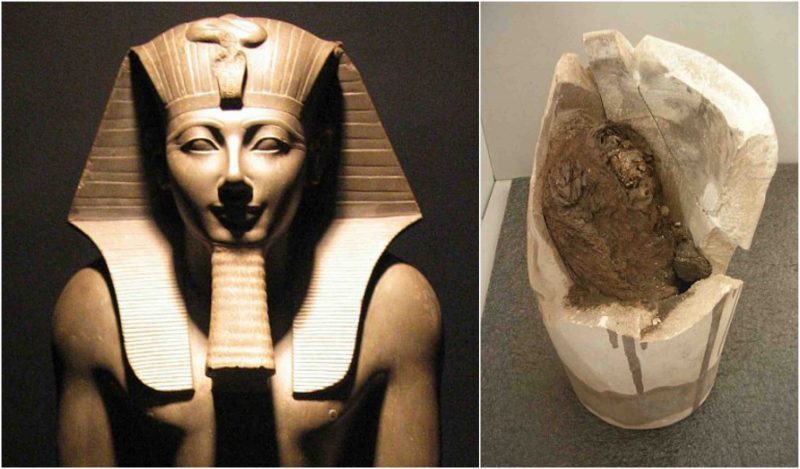The oldest case of heart failure in a mummy has been identified in the remains of Nebiri, Chief of Stables, who lived 3,500 years ago in Egypt. Nebiri’s head and a broken canopic jar with his internal organs were found in a plundered tomb in 1904 and researchers were allowed to test the tissues this year because the jars were not intact.

“The head is almost completely unwrapped, but in a good state of preservation. Since the canopic jar inscribed for Hapy, the guardian of the lungs, is partially broken, we were allowed direct access for sampling,” anthropologist Raffaella Bianucci, told Discovery News. Bianucci is in the legal medicine section of the University of Turin.
The research team of which Bianucci is a part made the announcement at the international Egyptology conference underway the week of August 23, 2015, in Turin. Other researchers on the team are with the universities of Munich, York and Turin.
Nebiri’s remains, which were found in the Valley of Queens in Luxor, are now housed at the Egyptian Museum in Turin. Bianucci reported that he was about 45 to 60 years old at death. Nebiri lived during the reign of Pharaoh Thutmoses III, 1479 to 1424 BC, during the 18 th Dynasty.

The Valley of the Queens near Luxor, Egypt, as seen from a balloon flight (Photo by Zureks/Wikimedia Commons)
The primary causes of heart failure are high blood pressure, metabolic disorders of the heart muscle, ischemia and valvular disease, Discovery reports. The researchers think the cause of Nebiri’s heart failure was hypertension.
“A systematic analysis of canopic jar content could help establish whether the disease was more frequent in our ancestors or its prevalence increased in modern times,” Bianucci said. Now about 20 million people worldwide experience chronic heart failure.
Nebiri suffered from severe periodontal disease with abscesses, which were revealed by a technology called Multidetector Computed Tomography and three-dimensional skull reconstruction.

The people who mummified Nebiri tried to remove his brains, but some tissues were still in the cranial cavity. The embalmers packed linen into his eyes, nose, mouth, ears, cheeks and skull.
The team of modern researchers saw limited calcification, evidence of atherosclerosis, in a carotid artery. “We saw only a tiny fleck of calcium. Since the rest of the corpse is missing, it is impossible to establish whether there was calcification in other artery walls,” Bianucci said.
An examination of the lungs showed he had what the research team called “heart failure” cells and evidence of edema or fluid collected in the lung’s air sacs.
“When the heart is not able to pump efficiently, blood can back up into the veins that take it through the lungs. As the pressure increases, fluid is pushed into the air spaces in the lungs,” Bianucci said.
The expertise of Nebiri’s mummification was excellent and rivals that even of royal people of the time, said Egyptologist Joanne Fletcher of England’s University of York. The high quality of the embalming enabled researchers to more easily diagnose Nebiri’s medical conditions.
The chemicals used to embalm him were sophisticated.
“It was a complex mixture of an animal fat or plant oil, a balsam/aromatic plant, and non-native conifer resin and pistacia resin,” said archaeological chemist Stephen Buckley of the University of York. “The last three ingredients contain strongly antibacterial compounds, so would certainly have helped preserve his body and lungs.”
Other researchers are working on reconstructing Nebiri’s face.